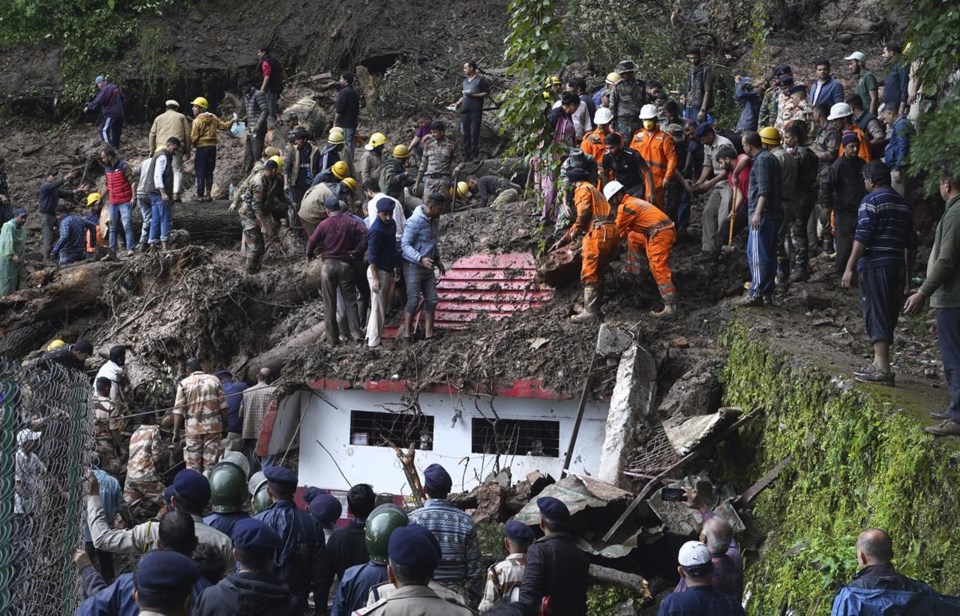NEW DELHI (AP) — Heavy monsoon rains triggered floods and landslides in India’s Himalayan region, leaving at least 33 people dead and many others trapped, officials told local media on Monday.
Torrential downpours that began over the weekend in the mountainous Himachal Pradesh state have flooded roads and washed away homes as scores of rescuers work to help those trapped under piles of debris.
A cloudburst in the state’s Solan district on Sunday night killed nine people in the area, and 12 people died following two landslides in Shimla, the state’s capital, authorities told the Press Trust of India news agency.
At least a dozen others were killed as heavy rains battered various parts of the state, sparking flash floods and more landslides, authorities said.
The state’s chief minister, Sukhvinder Singh Sukhu, said rescuers in Shimla were working to clear the debris and help those still trapped.
Cloudbursts are defined as when more than 10 centimeters (3.9 inches) of rainfall occurs within 10 square kilometers (3.8 square miles) within an hour. They are a common occurrence in Himalayan regions, where they have the potential to cause intense flooding and landslides affecting thousands of people.
Homes in Solan were washed away and roads flooded in the incessant rains, police told PTI. In Shimla, the landslides brought down a Hindu temple, which was crowded with devotees, raising fears that the death toll could rise as rescue work carries on.
All schools and colleges in the state have been shut and more than 700 inundated roads have been closed.
India's weather department warned that moderate to heavy rainfall were hitting various parts of the state on Monday. It had issued a red alert over the weekend for intense downpours in neighboring Uttarakhand state, where 60 people have died in monsoon rains this season, PTI reported.
Last month, record monsoon showers killed more than 100 people over two weeks in parts of northern India, including in Himachal Pradesh, which was the worst hit.
Disasters caused by landslides and floods are common in India’s Himalayan north during the June-September monsoon season. Scientists say they are becoming more frequent as global warming contributes to the melting of glaciers there.
In February of 2021, flash floods killed nearly 200 people and washed away houses in Uttarakhand.
The Associated Press



